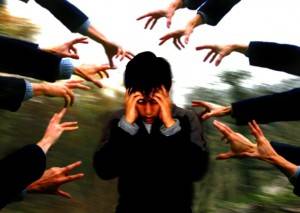The diagnosis is out, Ahmed Raza has Catatonic Schizophrenia, the 16-year old student of O-Levels suffers from a mental disease that hampers not only the patient’s movement but also deteriorates his speaking faculties.
Mr and Mrs Raza, Ahmed’s parents, were visibly depressed as this news was but a bolt from the blue for them. Their only son suffers from a mental ailment that is chronic, has no cure and the only treatment is lifelong medication and psychotherapy. Ahmed can control it, manage it, make terms with it but there is ‘no exit’ for him. The stigma will haunt him for the rest of his life.
Sanity, for most of us, is commonplace and trite. Majority of us are born sane and most of us stay sane for the rest of our lives. We idolize the ‘looney’, ‘insane’ and ‘deranged’ fictional characters not because they have lost grip on the last thread of sanity but because in them we witness the ‘other’ side of all we experience, feel and know. That hidden, stacked away, repressed, never-tried, never-tasted ‘dark’ side has a name and that is insanity.
Madness,? Lunacy? Insanity? Shakespeare would have quipped , “What’s in a name?”
In the days of yore, in more superstitious times, insanity was deemed as the work of djinns and evil spirits who had nothing better to do than spend their whole lifespan in controlling, manipulating, molding, folding and ruining the precious lives of young lads and damsels. During dark ages the mental patients were meted out inhuman treatment, they were beaten, paraded nude in the streets, used as circus freaks and presented as carnival curiosities. There were many myths and fantasies attached to abnormal behavior. Abnormality was revered as a divine gift in some cultures in other regions it was a one-way ticket to misery, poverty and endless deprivation.
The immediate treatment Ahmed needs can’t be administered at home or a hospital. He must be admitted for a month or two in one of the rehabilitation centers that have mushroomed in past decade all over the city.
These rehabilitation centers administer prolonged psychotherapy and medical treatment to mental patients and drug addicts. They advertise on roadside blocks, barriers, wall-chalking, and pamphlets; especially in Sunday magazines of various newspapers. They promise complete recovery of the patient and even offer their ‘services’ to bring the patient from the home or any other place he is commonly known to frequent regularly.
Soon Ahmed will be sent to one of the rehabilitation centres for treatment. Medicine and therapy will arm him to stage a comeback to the jungle of sanity.
Mental illnesses come in varying shapes, hues and differ in their intensity and after effects. An individual who suffers from any of the psychological diseases does not suffer alone, his family experience perpetual anxiety and prefer brushing the ‘whole matter’ under the rug. This behavior is opted to save the individual and family from the stigma attached to psychological disorders.
Society, Erwing Goffman a notable American sociologist once remarked, is an insane asylum run by the inmates. If everyone suffers from same disease it's not a disease at all, it is the mundane fact of life. But when minority deviates from the majority curve, they are sent to little ‘insane asylums’ so that they can be tamed, subdued and eventually ‘cured’.
In all this “sane insanity” or “insane sanity” what we need to practice is to be more human, more compassionate and do all in our mortal existences to bring back the dwellers of the ‘dark’ side back to the life, back to the light.
Let us end by remembering Nietzsche, the mad philosopher of 19th century, was fascinated by insanity all his life. His aphorisms are widely used, misused and even abused today by all and sundry, so here is one to conclude this write-up, “In individuals, insanity is rare; but in groups, parties, nations and epochs, it is the rule”.
So dare to mull over the rarity of insanity in ‘individuals’, and dull reality we lucid beings live with and how horrid it becomes when practiced by the ‘masses’ at large.






